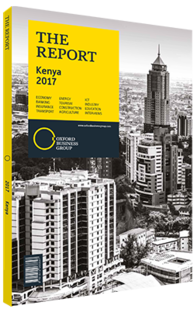This chapter includes the following articles.
Industry & Retail

Under the auspices of the overarching Vision 2030 economic development plan, industrialisation remains a top priority for the Kenyan government, with the sector recording steady growth in 2015 against a backdrop of falling energy and input prices, lending an optimistic outlook for 2017 and beyond. Industrial stakeholders continue to face hurdles, however, and manufacturing’s contribution to GDP has not kept pace with broader macroeconomic growth. Low-cost imports across nearly all segments of the sector have had a negative impact on many local producers, while overlapping and unclear regulatory frameworks have created uncertainty about the role of the country’s export processing zones against a backdrop of planned new special economic zones. Although rising imports, shilling depreciation and unclear legal reforms will continue to challenge Kenyan industrial producers, the sector’s growth outlook for 2017 is positive. The retail sector in Kenya is benefitting from rising middle-class purchasing power, robust macroeconomic growth and a surge of investment in high-end formal retail space, with a host of foreign retailers, brands and producers entering the market. Although well-entrenched local players remain dominant in the supermarket segment, the entrance of France’s Carrefour in 2016 marked an increase in competition between local and foreign outlets for new market share. Kenya’s retail market is expected to record a positive performance in 2017, driven by population growth, positive economic metrics and heightened marketing activities. With urbanisation indicating strong potential for expansion into smaller cities and formal retail space in Nairobi approaching saturation, retailers will be looking to reorganise value chains.
This chapter contains interviews with Chris Kirubi, Chairman, Haco Tiger Brands; and Phyllis Wakiaga, CEO, Kenya Association of Manufacturers.

